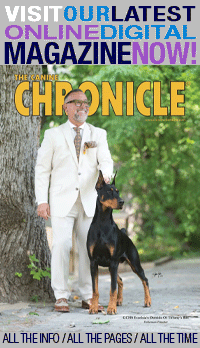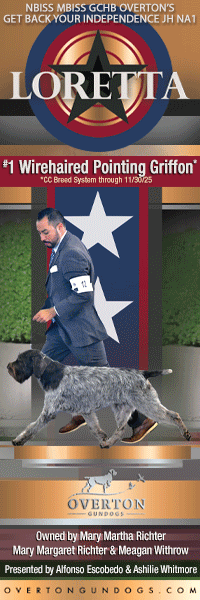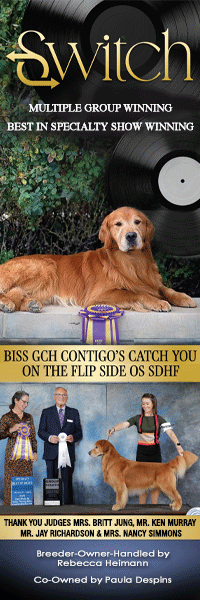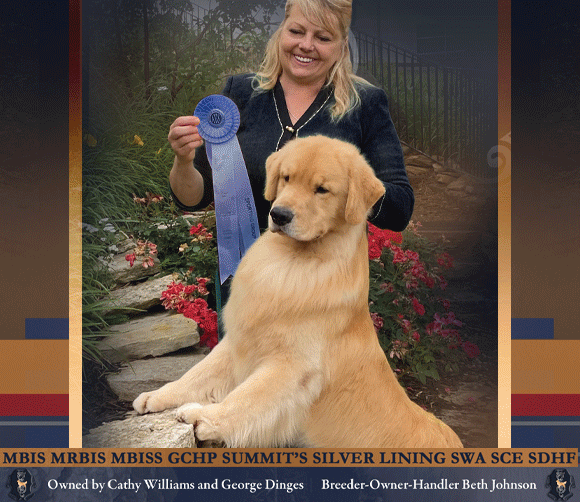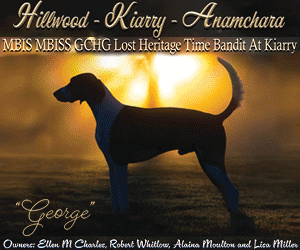The Power of Positive Judging
by Dr. Buris Boshell
From the archives of The Canine Chronicle, August, 1991
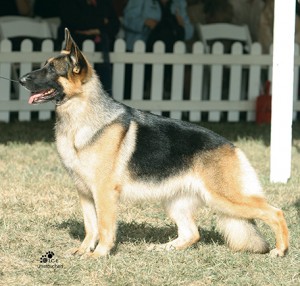 Some people have an eye for a dog or horse; others have a basic ability which they cultivate and improve. I honestly feel, however, if a person does not really have an eye of appreciation for an animal, they will never be a top judge.
Some people have an eye for a dog or horse; others have a basic ability which they cultivate and improve. I honestly feel, however, if a person does not really have an eye of appreciation for an animal, they will never be a top judge.
Probably other than intellect and an eye for an animal, the next most important feature of a good judge is maturity. There is a tendency for judges starting out to fault judge. If they see a single crooked foot, a slight dip in the topline, or an eye that may be too large, they feel comfortable turning that dog down because they can tell the owner what was wrong with it.
The same is true for the Walking Horse judge who puts up an animal that makes no mistake in the flat walk, running walk or canter, but when properly assessed was mediocre in all three gaits. He then will penalize an outstanding horse that perhaps took a step or two wrong in the canter, tumbled one time, or perhaps cross-fired for a few steps, but will feel comfortable in putting up total mediocrity. I call this fault judging, and it has no semblance of positive judging.
Another fairly common occurrence is for a judge to put handler “A” up in one class, handler “B” in the next class, handler “C” in the next, when in fact handler “A” actually had the best specimen in every class. This is a sign of immaturity and lack of self-confidence which penalizes a good animal in the process of sharing the loop. Each animal should be judged on its own merits; if one handler wins everything because he has the best animal, then so be it.
Another problem that is difficult to solve, but should be, is that of giving the edge to the individual who has bought a horse from that particular trainer or a dog from a breeder/judge.
When a judge misses a great animal totally and puts up a mediocre specimen, there are two possibilities: he is either crooked, or he is stupid. I do not believe any of us would like to be characterized either way.
A quality judge has the intellect, and eye for the animal, a degree of maturity whereby he or she is willing to learn, and looks first at overall quality, then fault judges only in terms of finding which of the outstanding animals made the fewest mistakes or had the fewest anatomical abnormalities.
An outstanding judge selects the best animals, rules out the mediocre ones from the beginning, and then only seriously considers those which are outstanding. This can be a problem when you have a class where all entries are prospects and rarely a class where they are all outstanding. The latter should not be too difficult to judge because you cannot make a mistake either way.
When I first came into the show dog industry in about 1956, judging was handled largely by trainers and handlers and, as a result, there was a lot of back scratching: trainer “A” would put up trainer “B” in Boston knowing that trainer “B” was going to be judging in Philadelphia and would reciprocate.
This is deplorable, but unfortunately it has been a common practice with both the dog and horse judges. The American Kennel Club showed enough wisdom to abolish this system and to license its judges as carefully as possible based on their background in dogs and overall ability, actually giving them fairly significant tests to prove they at least know the standard.
In actuality, the dog judges are “professional” judges. No one is allowed to judge who makes his living from dogs, i.e. kennel operators, pet supply salesmen, magazine owners, and so forth. This has improved the quality of judging, but has not totally solved the problems. There appears to be a tendency to allow the American Kennel Club Representative to observe the judge in whose case a question has been raised and then report back to the AKC. The big fallacy in this is that, unfortunately, not all of the AKC Reps are that qualified in terms of judging all breeds. This would be much more satisfactory if the kennel club merely had the whole judging process on videotape and sent it to New York for a panel of three experts to analyze the judge’s ability, or at least his performance.
Licensing has not, however, totally solved the problem. There is the occasional judge who will turn down a dog because it is owned or was bred by someone he does not care for, and then, of course, there is the occasional judge who just does not know any better.
From the Walking Horse standpoint, it appears there are a number of judges who actually walk into the ring trying to beat a horse rather than trying to put one up. Repeatedly, I have seen a super horse bobble in the canter and be dropped down like an elevator to last where there was nothing else in the class that even compared with the overall performance and conformation. We also occasionally see trainers give their trainer friends a strong edge when making their decision. Neither of these is helpful in the long run, and actually hurts the entire industry.
I think we should have even better systems of selecting our judges. We should have continuing education for them and should have some realistic supervision at the shows. I am aware of the fact that it is not feasible to send an expert to every show. We could, however, at a fairly low cost, film a Walking Horse show and have a trio of experts evaluate the quality of the judging at the central location.
If an individual is noted to have missed some outstanding horses in order to put up some poor ones, he could be called in and have the film reviewed with him and have an opportunity to explain his reasons. If the reasons are not valid, the judge should be placed on probation and observed carefully to see if he is capable of improving. If not, his license should be revoked.
In the horse game, there is no question but what we would all benefit by having professional judges, just like the baseball leagues have professional umpires and referees. The horse business is large, and there is a great deal of money involved, and a great deal of pride in winning.
If a judge’s foundation was set up and contributions made into it derived from a small fee charged on the registration of each horse and each show entry, perhaps a dollar each, there is no reason one could not hire a coterie of six competent professional judges.
It may not be possible to do away totally with trainers as judges, however, I do feel we should have a systematic review of their competence and their performance and that we should have educational programs to help the younger judges get started.
The importance of positive judging was driven home to me personally when I bred a Miniature Pinscher puppy called Bo-Mar’s Road Runner. Road Runner had a right leg that was fairly crooked, and this was fairly obvious. In dogs, where conformation is judged, a crooked leg is a major fault. I looked at this as he started to develop, and he was so beautiful everywhere that I was sick about the whole thing and had largely come to the conclusion I would never show him.
Finally, at the urging of some friends, the first time I showed him was in Birmingham in the puppy class of Min Pins. He won the Breed and then won the Toy Group. He went on to New York and was Best of Winners at Madison Square Garden, went to Chicago and won the Sweepstakes and Best of Winners at the National Specialty, and finished the following day at the International Kennel Club Show; then shown six times in Specials, won five Group Firsts, a Group Second and a Best in Show. Later, after many Best in Shows and a large number of Group wins, he became one of the all-time leading sires having sired between 80 and 90 Champions.
The point I want to make about this is, here was a dog with a lovely head, lovely topline, tremendous show disposition, and outstanding rear end, and Irish Setter red color, but with a crooked front leg. At that point in my career as a judge, I am not sure I would have had the maturity to put this dog up with a fault I could find so easily. I suddenly realized, however, that there were a lot of mature, competent judges who did positive judging, i.e. they looked first for quality then searched the group they had picked out based on quality to see which one had the fewest faults and when one found an outstanding showman with everything but one right leg to have superstar caliber, they just marked off the crooked leg and gave him Best In Show.
This realization, I think, has made me a far better judge, and when I judge a show at this point in my judging career, I first look at the dogs I see of some quality, and then I find one that is just totally mediocre. I will spot the mediocre dog and put all the poor specimens behind him. I will then move all the dogs with good type and quality in front. I then excuse the mediocre specimens and spend my time sorting out the dogs that have merit and have quality as to which one has the most quality and the fewest significant faults.
There should be some guidance for judges in both the horses and the dogs in this regard. If a horse when making six passes, i.e., flat walk, running walk and canter, the first way of the ring then the same second way of the ring, makes a super performance and has a little problem cantering one way of the ring, you would not like to drop him below the mediocre specimens. You would, however, need to know just how much against him a mistake in the canter should count. There will be many occasions when that particular horse is so far above anything else you will have to forget the mistake in canter and tie the horse anyway, provided he did actually canter correctly–finally–both ways of the ring.
We have seen individuals who talk a good game or ride a good game but when placed with a practical job of selecting the best dog or horse, they are like a lost ball in high weeds. Both the horse game and the dog game are outstanding sports. They involve the entire family and can be good for all concerned. I would like to see the organizations in authority do some of the things I have mentioned in this article such as, first of all, having a quality application for all judges.
Have adequate testing to be sure the judge has reasonable knowledge and then to have a performance evaluation to be certain the judge has practical ability. There should be a good book on judging whereby one could have some guidance as to the extent that a penalty should be made for an anatomical deficiency or for a performance deficiency.
The importance of this can be readily witnessed at almost any horse show where you may go to a show three Saturday nights in a row; you will find one judge who is very mature and competent who will accept the minor mistake and still go ahead and tie the horse, then you will see another one as soon that, as he finds one single mistake, drops the animal involved all the way to the bottom totally ignoring some really outstanding qualities.
This is certainly not entirely the judges’ fault; it is the fault of the system.
Another area that deserves some discussion is that of judge intimidation by exhibitors, trainers, breeders and others. It appears that when a new judge starts, some of the exhibitors immediately test him to see whether or not he can be intimidated. They may call him before the show; they may abuse him following the show, either verbally or even physically, and unfortunately, an occasional judge is intimidated and in turn puts this exhibitor up the next time he or she shows under the judge.
I witnessed an incident several years ago where a handler pulled a judge aside following the class in which the judge placed this particular handler down and put up another animal that he thought was more deserving. I saw the performance outside the ring whereby the handler literally blasted the judge regarding his lack of knowledge, his lack of understanding and various other things and, unfortunately, two or three months later I saw the picture of this handler with a big win under that particular judge.
This type action just encourages the individual to keep doing the same thing. I do not know of an easy answer other than the judge just asking that particular handler/exhibitor not to show under him again. During my 30 years or so of judging dogs, I have been called by an exhibitor on two or three occasions, and I responded by saying, “since you have called, I would ask a personal favor, please do not exhibit under me any further unless you apologize for your actions today”. I explained it would be difficult for me to give them fair consideration after this verbal abuse.
I do not know a simple way to turn these people off, however, certainly one should not cow down to them, and I hope we see the time when there are penalties set up whereby this type of behavior ceases. A judge who has any maturity and backbone would stop it in its tracks when he is called or approached. It is a sad story when the judge puts up the chronic complainer just to keep from having to face the verbal abuse; if a judge cannot stand the heat, he should not go into the kitchen.
Clearly, judging has come a long way, and I think some of the really bad practices have been stopped. At this point, however, I believe we should have true professionals for judging both dogs and horses and try in every way possible to get the politics out of the business. When you see the sign “May the Best Horse Win” of “May the Best Dog Win”, you certainly wish that could be true every time. There is really no good reason why it should not be.
Editor’s Note: Dr. Boshell is a Walking Horse owner who, along with his daughter and granddaughter, show their horses. Dr. Boshell is known to the dog show world as a breeder and AKC Judge. He has produced over 200 champions and Best In Show winners. Boshell has owned Top Miniature Schnauzers, Dobermans, and Miniature Pinschers for many years. He has judged dog shows throughout the world and is a famed Endocrinologist. He has authored books on Min Pins and Diabetes.
Short URL: https://caninechronicle.com/?p=279456
Comments are closed
